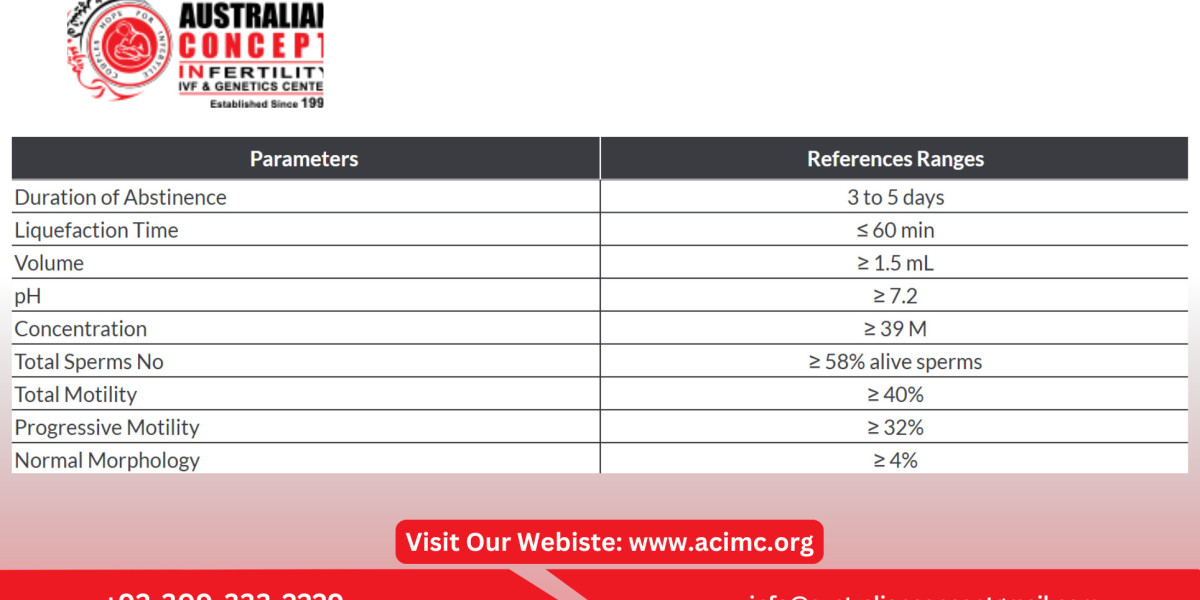A semen analysis is a cornerstone diagnostic test used to evaluate male fertility. It provides detailed insights into various aspects of sperm health, which are crucial for successful conception. Understanding the key parameters in a semen analysis normal report helps in determining whether the semen sample meets the criteria for normal fertility.
Why Is a Semen Analysis Important?
Male fertility depends on several factors, including sperm production, structure, and motility. A semen analysis assesses these aspects to identify any abnormalities that might affect a couple’s ability to conceive. The report offers a comprehensive evaluation of sperm health and guides infertility specialists in recommending appropriate treatments if necessary.
Key Parameters in a Semen Analysis Report
Here are the primary components evaluated in a semen analysis and their significance for normal fertility:
1. Semen Volume
- Normal Range: 1.5 milliliters or more per ejaculation.
- Significance: Sufficient volume ensures sperm have an adequate medium to travel and survive. Low volume may indicate an obstruction or issues like retrograde ejaculation.
2. Sperm Concentration (Sperm Count)
- Normal Range: 15 million sperm per milliliter or more.
- Significance: A higher sperm count increases the likelihood of successful fertilization. Low sperm count, known as oligospermia, can reduce fertility potential.
3. Sperm Motility
- Normal Range: At least 40% of sperm should be motile, with 32% showing progressive motility.
- Significance: Motility measures how effectively sperm can swim toward the egg. Poor motility, or asthenozoospermia, can hinder fertilization.
4. Sperm Morphology
- Normal Range: 4% or more of sperm should have a normal shape.
- Significance: Abnormally shaped sperm may struggle to penetrate the egg, impacting fertilization. This is known as teratozoospermia.
5. pH Levels
- Normal Range: 7.2 to 8.0.
- Significance: The pH level reflects the balance of acidity and alkalinity. Abnormal pH can indicate infections or blockages in the reproductive tract.
6. Liquefaction Time
- Normal Range: Semen should liquefy within 20 minutes after ejaculation.
- Significance: Proper liquefaction ensures sperm mobility and enhances their ability to reach the egg. Delayed liquefaction may signal prostate issues.
7. White Blood Cells
- Normal Range: Minimal or no white blood cells.
- Significance: High levels of white blood cells indicate infections or inflammation, which may affect sperm quality.
Interpreting a Normal Semen Analysis Report
If all parameters fall within the normal range, it indicates that the semen sample has optimal conditions for fertility. However, a normal report does not guarantee conception, as other factors like female fertility and lifestyle also play crucial roles.
What to Do If Results Are Abnormal?
Abnormal results in a semen analysis report may require further investigation. Depending on the findings, an infertility specialist might recommend:
- Lifestyle changes: Improving diet, reducing stress, and avoiding toxins.
- Medications: Hormonal therapies to address imbalances.
- Surgical procedures: To correct obstructions in the reproductive tract.
- Assisted Reproductive Techniques (ARTs): Options like ICSI or IVF treatment can bypass specific issues.
Conclusion
A semen analysis provides vital information about male fertility by evaluating key parameters such as sperm count, motility, and morphology. Understanding these metrics is essential for diagnosing fertility issues and exploring treatment options. If you're facing challenges in conceiving, consulting an infertility specialist and undergoing a semen analysis can be the first step toward identifying and addressing the problem.
For More Details: https://acimc.org/ivf-lahore/








